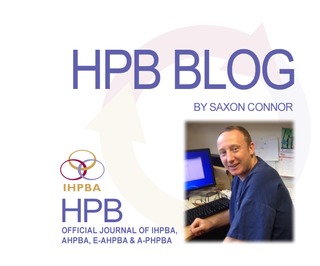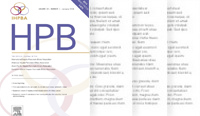International Hepato-Pancreato-Biliary Association
HPB Blog, February 2019

Something for everyone in this months issue of HPB
Having just come back from New Year leave to the February line up for HPB it struck me how HPB continues to increase the breadth of the quality of articles being submitted and accepted. It is great to see the IHPBA community supporting its journal. The issue starts with two systematic reviews, one which aims to answer the question whether live donor vs. deceased donor liver transplantation gives better outcomes for patients with HCC. Despite identifying 29 studies, there were no randomised trials. Most early outcome and survival metrics were similar. However, when survival was analysed by intention to treat, there was a small benefit in 5 year outcomes for those undergoing living donor transplantation. Although this is interesting data, practically it would seem more likely that cultural factors may be the strongest driver as to which option is offered to patients. Vaska and Abbas present a very enjoyable read on the value of intraoperative bile leak testing with further details covered in my highlight.
There are 4 studies which have utilised big datasets to try and answer clinically relevant questions. Siskind et al demonstrated a 22% reduction in mortality for patients undergoing portal venous drainage as opposed to systemic venous drainage when receiving pancreas transplant after kidney transplant. Vallance et al provide some excellent data to help decision making for elderly patients considering colorectal liver resections although the absence of quality of life metrics is food for thought. Fitzgerald et al provide a simple matrix to predict survival for patients alive at 3 months after pancreatectomy. Although one concern is that margin status seemed to be an important factor yet the incidence of a positive margin in the dataset was only 24%, despite 83% of tumours being greater than 2cm in size. A definition of margins was not specifically provided but this low incidence suggests Verbeke’s definition was not applied and therefore the results may not be accurate for those units recording more detailed margin analysis. Kolarich et al analysed patients with solitary HCC and found that when considering ablation vs. resection, that size, degree of fibrosis and type of resection need to be taken into account if survival is to be optimised.
Two papers are likely to create significant discussion at your journal club. Kizy et al demonstrate the significance of LN positivity in patients with intrahepatic cholangiocarcinoma, suggesting that surgery may not improve survival over as compared to chemotherapy alone. Secondly Del Chiaro et al suggest arterial resection offers survival advantage for selected patients who have undergone neoadjuvant therapy for borderline resectable pancreas cancer.
Akita et al present an interesting paper demonstrating that intrahepatic cholangiocarcinoma should be separated into large duct and small duct disease as they are genetically and biologically different.
Attiyeh et al present a paper suggesting quantitative CT imaging analysis to help predict the underlying pathology of branch duct IPMN. If this work can be replicated it may help reduce the need for unnecessary intervention on such cystic lesions.
The remaining papers are liver focused, Reistad et al demonstrate diffuse reflectance spectroscopy can accurately grade liver steatosis in-situ. Uz et al provide an analysis of the hepatic microcirculation following portal vein embolisation that suggests angiogenesis occurs within the hypertrophic lobe. Steve Wigmore will cover a paper in his highlight from MSKCC that demonstrates how care bundles can reduce surgical site infection in patients requiring synchronous liver and colorectal resection.
Two papers focus on HCC, with Law et al demonstrating patients who are anti-HBc seropositive tend to present later with larger tumours but it does not appear to influence long term survival. While Li et al have demonstrated that preoperative pre-albumin levels in patients with HCC is associated with worse survival and may be useful as a prognostic marker.
Saxon Connor
Corporate Partners
If you are interested in becoming a Corporate Partner of the IHBPA please contact industry@ihpba.org
Find out more


